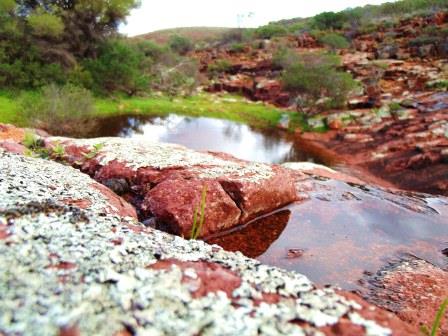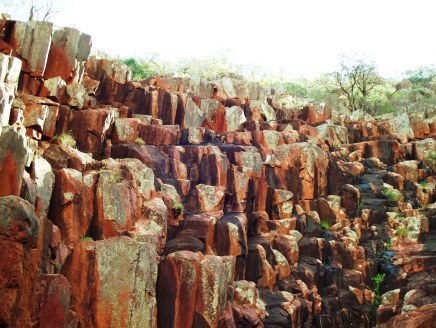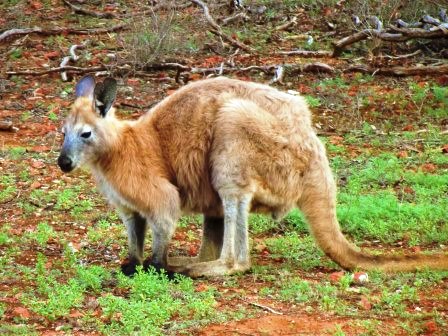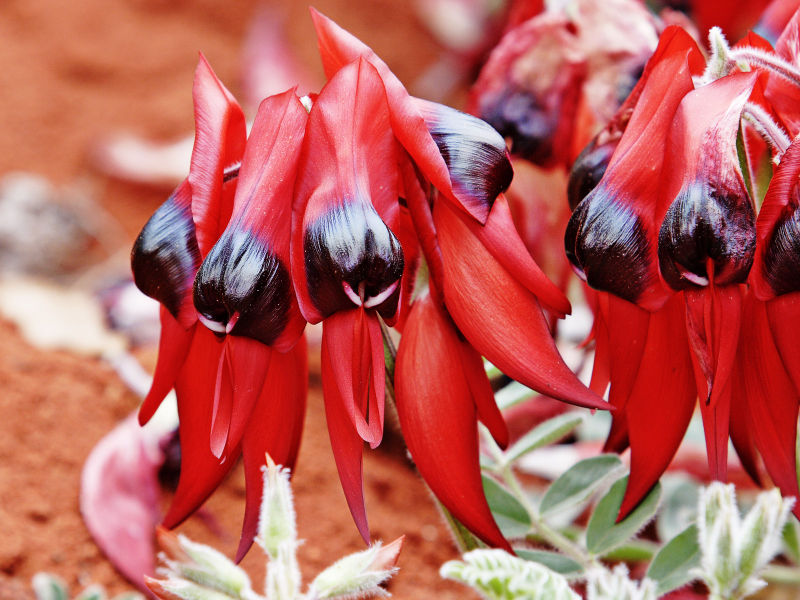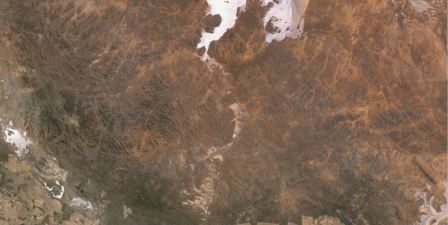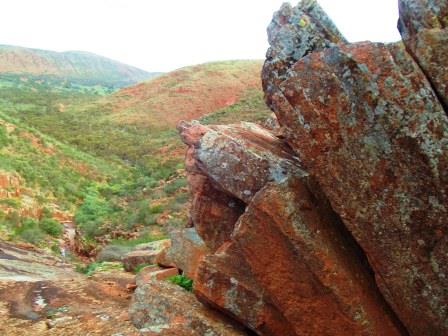Gawler Ranges Tourism
See Gawler Ranges National Park Brochure
& Gawler Ranges National Park Map
Nature at its BestA perfect destination for a camping holiday or one-day excursion, the Gawler Ranges National Park provides a safe and natural habitat for an abundance of native wildlife and vegetation. The ranges were named by Edward John Eyre in 1839 on one of Eyre's earlier expeditions. The National Park was established much later in 2002. The Park encompasses what was known as Paney Station, and portions of Pine Lodge and Scrubby Peak stations. The park provides fantastic opportunities for sightseeing, photography, touring by 4WD and the chance to enjoy a remote bush camping experience. Tranquil waterfalls: |
|
Geological FormationsThe ranges were formed by volcanic activity nearly 1.5 billion years ago, the volcanic activity resulted in a lava field, rather than volcanoes. The highest point is Nukey Bluff at 465 m above sea level. After heavy rainfall the famous Organ Pipes (pictured right) or Kolay Mirica Falls may be running with water.
Prehistoric formations of the Organ Pipes: |
|
WildlifeThe park is home to 164 fauna species including the rare and elusive Yellow Foot Rock Wallaby. Euro kangaroos (senior male pictured right) can be seen casually grazing at the foot of the hills. The park is also home to 140 species of birds including the Wedge Tailed Eagle who with a wingspan of up to 2.27m maybe seen hovering for prey. For more information on the park visit the Gawler Ranges National Park website Photogenic Euro Kangaroo: |
|
WildflowersRenowned for its wildflower display (upto 976 species) in the Spring, the best time to visit is between April and October, this is also while the weather is cool. Edward John Eyre made the first recorded sighting of South Australia's floral emblem at the ranges, the Sturt Desert Pea, which is interestingly a legume and relies on polination by birds (flower pictured left). Sturt's Desert Pea: |
|
CampingCampers are welcome in designated camp sites throughout the Gawler Ranges National Park, with several campgrounds to choose from. Accommodation is available in the "Shearer's Quarters" by prior arrangement with National Park staff. Fees apply to camp in this park. It is mandatory to pay for vehicle entry and camping prior to arrival as the self-registration stations are currently being phased out of operation. All wood fires and solid fuel fires are prohibited during the Fire Danger Season. Gas fires are permitted other than on days of Total Fire Ban. |
|
Getting There...The ranges are located approximately five and a half hours drive north-west of Adelaide on the central Eyre Peninsula region. Located 40km north of Wudinna and 40km north-east of Minnipa, access to the Park is available through Wudinna, Minnipa and Kimba. Most tracks within the Park are recommended for high clearance 4WD vehicles only. However, high ground 2WD vehicles may access some areas. Check road conditions before travelling in wet conditions. See how to get there for more information. Experience nature via the many walking trails: |
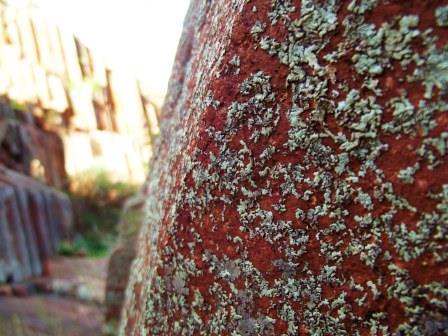 |
ToursFor more information on tours, or to obtain an Information Pack, contact the Gawler Ranges Visitor Information Centre.
If you're planning a trip to the Gawler Ranges, plan a day or two to take in some of the local attractions outside of the park such as Mount Wudinna, Pildappa Rock and Polda Rock Recreation Reserve. All of these reserves have barbecue and toilet facilities and that will be enjoyed by all the family. They all have walking trails waiting for you to traverse and explore. The picturesque Organ Pipes: For more photos visit our on-line photo gallery. |
|
Friends of the Park
The Friends of the Gawler Ranges National Park group was established in 2003. We have restored Pondanna Outstation which is now available for hire. The homestead has a new roof and the underground tanks have been cleaned out and reroofed. Lots of plastering, sanding and painting have taken place to complete the paint job inside. The Chaff shed has been cleaned and tidied and the chaff cutter restored.
The group has also been successful in receiving grant monies of $2000 from the State Friends of the Park group, and $3000 from the local District Conservator, to aid in their activities. Interpretive signs have been installed to show what it was like in the old days at Pondanna. Crops were grown at Pondanna and cut for hay and chaff to feed the horses that were used on the outlying stations. Pondanna is reportedly to receive as much rainfall as Minnipa (60 klms to the south).
Old Paney Homestead has now had a face lift with the restoration of the tank walls and house walls through Restoration workshops. These workshops have been conducted twice a year and have been very successful. We have also restored 8 klms of boundary fence with Yardea.
For more information, or to join, contact Leala Hoffmann phone: (08) 8680 5095 or Sandy Alexander: phone (08) 8680 2090
The group usually meets the last weekend of every month from March until November each year.
The Friends of the Park scheme began in 1982 at the Ferguson Conservation Park. Since then this community spirit has spread state wide.
Friends of Parks Inc is the independent state body established to protect and represent the interests of the many individual Friends of Parks groups and affiliated groups in SA. Together these groups (over 130 in 2012) represent a membership of over 5000 volunteers whose common interest is the protection and enhancement of South Australia's natural and/or cultural heritage. These participants contribute 37,600 hours of work, which is worth $6.1 million annually. The main objectives of the Friends of the Park groups are to undertake physical park management tasks, fundraising projects, cultural and educational events and social activities.
The Friends of the Parks organization is available for membership to any person regardless of age, gender, nationality, occupation and ability - there is something for everyone. Each group is self-supporting and members pay an annual subscription to continue the group's support. Nationwide the long-term survival of the National Parks networks is becoming more depending on volunteer support, so come and join us - it's lots of fun!


